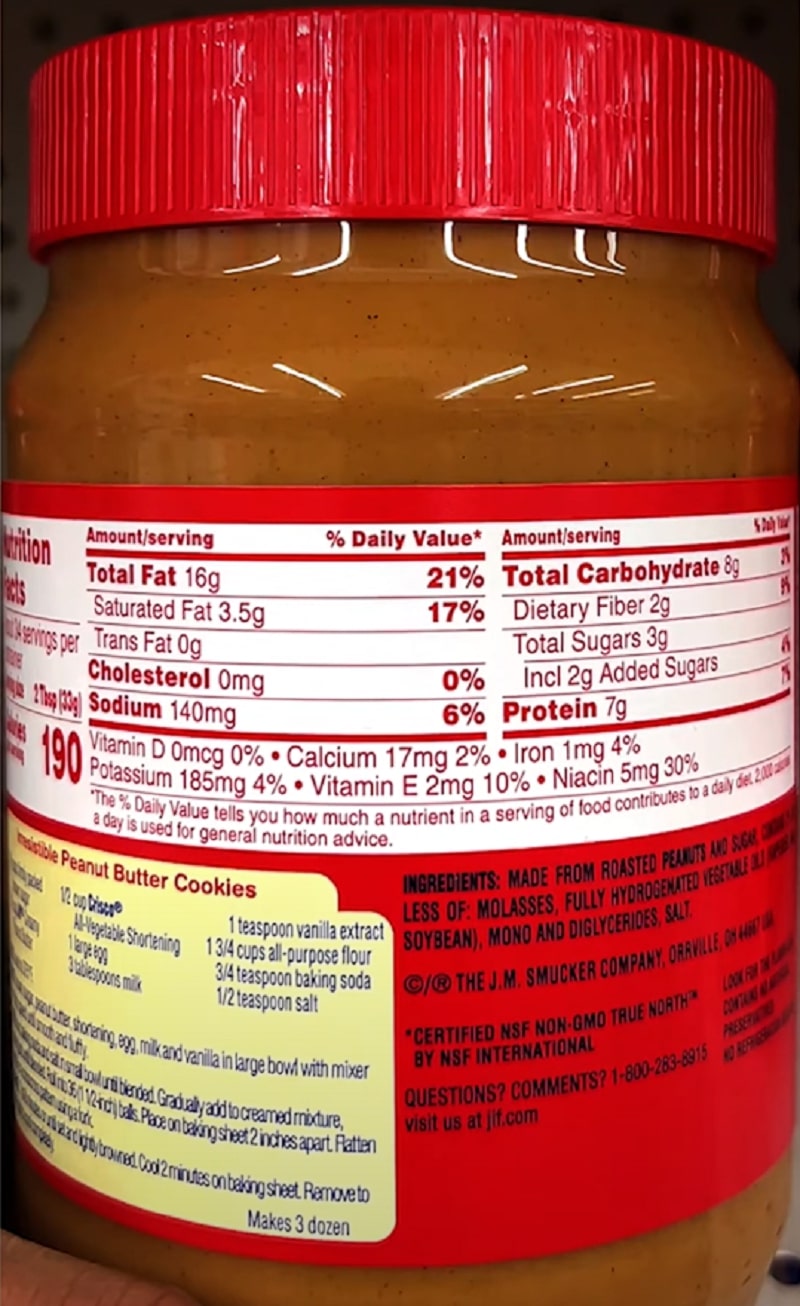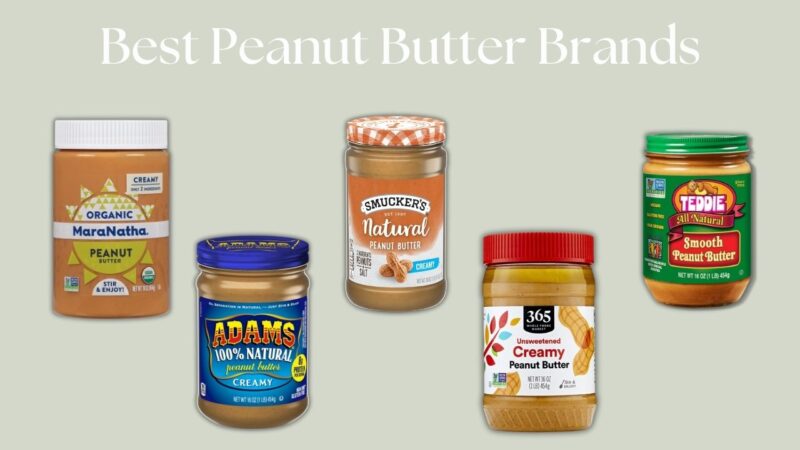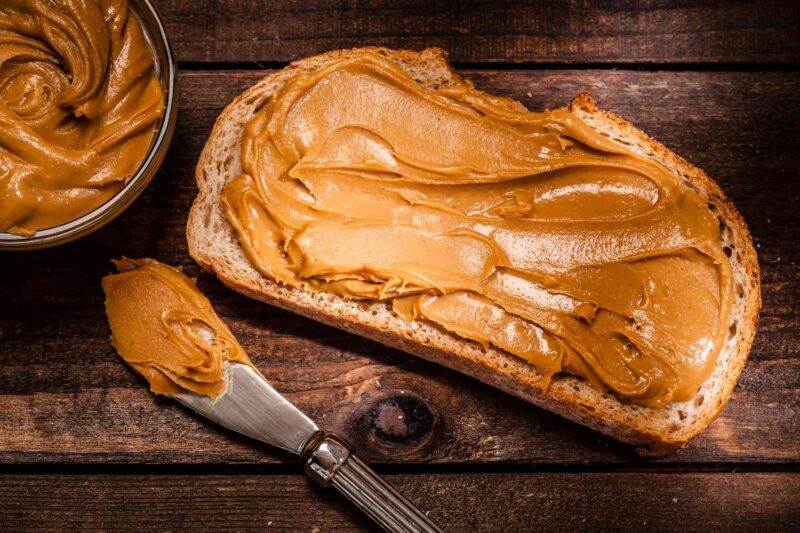When I started looking at peanut butter more closely, I was surprised by the number of unhealthy ingredients hiding in something so basic. It made me rethink how to pick the healthiest option. Peanut butter, after all, should be a simple blend of peanuts. Sadly, most brands clutter that simplicity with unnecessary additives.
Let’s break this down to make your choice easier and your pantry a bit healthier.
Key Takeaways
- Choose peanut butters with only peanuts and salt, avoiding added sugars and oils.
- Avoid trusting “natural” labels without checking the ingredient list for unnecessary additives.
- Look for brands that offer clean, simple options like Maranatha, Smucker’s Natural, and Teddie.
Peanut Butter Should Be Simple

Peanut butter has gained a reputation as a snack full of healthy fats, plant protein, and even a little fiber. Despite some fears about fat content, the unsaturated fats in peanuts benefit your heart and overall health. Choosing peanut butter with pure ingredients keeps you closer to those benefits.
Yet, many “natural” packages on the shelves sneak in extra oils and sugars. Some of these additives, like palm oil, even contribute to environmental damage. So, if you spot oils separating in the jar and you need to stir it, that’s a good thing! It means your peanut butter is free from unnecessary ingredients.
What to Look For in a Healthy Peanut Butter?

The healthiest peanut butter keeps it simple. Check the ingredients list carefully and stick to one or two items: peanuts and salt, if you like. You don’t need sugars, oils, or other fillers. This applies to other nut butters too, like almond or cashew butter.
Here are a few tips for making your choice:
- Read the label – Make sure you don’t see palm oil, added sugar, or other preservatives.
- Look for natural separation – If the oil floats to the top, it’s a sign of a cleaner product.
- Peanuts first – The fewer ingredients, the better.
“Organic and natural peanut butter, made with just peanuts and salt, offers clear health benefits. These simpler versions, free from added sugars and oils, can support heart health and help regulate cholesterol levels,” says Kayla Girgen, RD, a nutrition expert.
Her article on Health.com explains that health benefits include:
- Supporting heart health with healthy fats like polyunsaturated and monounsaturated fats.
- Helping regulate cholesterol by lowering LDL (bad) cholesterol levels.
- Providing essential nutrients such as protein, magnesium, and vitamins B6 and E, which contribute to overall wellness.
- Offering a clean, whole-food option free from unnecessary sugars and oils.
Not All “Natural” Labels Are Equal
Don’t trust the word “natural” blindly. There aren’t any strict rules about what makes a product natural, so brands often slap this label on peanut butters that still contain oils or sugars. Even well-known brands like JIF and Skippy have “natural” versions that contain extra ingredients.
You’ll even find Whole Foods offering nut butter with things you don’t need. It pays to take a moment to read that label.
Best Brands to Buy

To make your next grocery trip easier, here’s a quick list of brands that offer “peanut-only” package. These varieties keep it simple, without added oils, sugars, or stabilizers. Smooth, chunky, salted, or organic—you can find the perfect fit.
| Brand | Features | Available Varieties |
|---|---|---|
| Maranatha | Organic option, smooth and chunky | Plain, Salted |
| Smucker’s Natural | Widely available, no added sugars or oils | Smooth, Chunky |
| Teddie | Made in small batches, available in many stores | Unsalted, Salted, Smooth, Chunky |
| Adams | No-stir option but still healthy | Smooth, Crunchy |
| 365 Everyday Value | Whole Foods house brand, minimal ingredients | Smooth, Chunky, Organic |
Choosing Between Salted and Unsalted
If you’re concerned about sodium, opt for unsalted peanut butter. That way, you control the salt. On the other hand, a little salt can enhance flavor, and many peanut butters keep it to a modest level. Just be mindful of your intake elsewhere.
How I Use Peanut Butter
I like keeping it simple when I eat peanut butter. Whether it’s on rice cakes, toast, or alongside some fresh fruit like apples or radishes, it adds a satisfying protein boost. For me, it’s not just a snack—it’s a way to add wholesome nutrition to my day without complicated extras.

Here are the nutrition facts.
| Nutrient | Amount (per 2 tbsp) |
|---|---|
| Calories | 191 |
| Total Fat | 16.4 g |
| Saturated Fat | 3.3 g |
| Unsaturated Fat | 12.29 g |
| Sodium | 136 mg |
| Carbohydrates | 7.14 g |
| Fiber | 1.6 g |
| Sugar | 3.36 g |
| Protein | 7.1 g |
You don’t need to compromise your health or taste. Keeping your peanut butter simple is the key. Check labels, stir with pride, and enjoy the real taste of peanuts without all that extra junk.
Conclusion
Healthy peanut butter is all about going back to basics. The cleaner, the better. Stick to peanut butter that only contains peanuts (and maybe a bit of salt) for the most health benefits. Brands that rely on real, whole ingredients are the ones you can trust. Enjoy peanut butter as part of your diet, and feel good knowing you are making a smarter, healthier choice.
Also, if you are planning some grilling in your backyard, check out my simple 3 ingredient BBQ sauce recipe.



